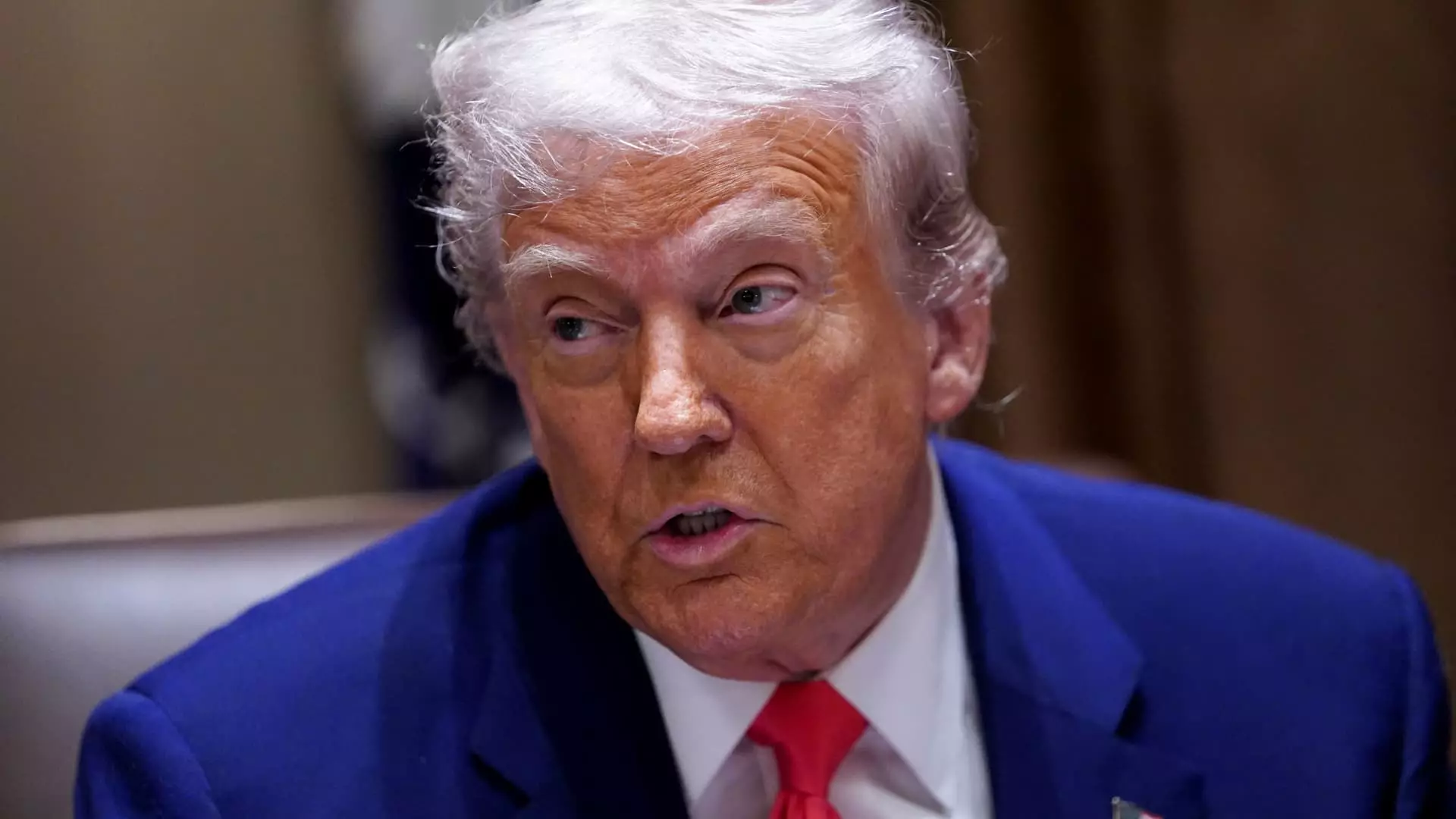The recent surge in tariffs imposed by President Donald Trump on Chinese imports has thrust the United States into uncharted economic waters. An alarming 145% tariff rate, a sharp escalation from previous levels, raises serious concerns about the long-term impact on trade relations and economic stability. Economist Erica York, an esteemed vice president at the Tax Foundation’s Center for Federal Tax Policy, warned that such drastic tariffs could effectively sever trade ties between the U.S. and China. The effects of this protectionist measure are more than just an academic debate; they manifest in real-life repercussions felt by countless businesses and consumers alike.
The fundamental premise of protectionism is to shield domestic industries from foreign competition. However, as history has illustrated, excessive tariffs can stifle innovation, increase consumer prices, and reduce the variety of products available in the market. By placing such a heavy burden on imports from China, the Trump administration not only jeopardizes beneficial trade relationships but also risks alienating vital allies and partners.
The Market’s Response: Sinking Confidence
As financial markets reacted swiftly to the news of these increased tariffs, the responsibility for economic uncertainty shifted primarily onto the shoulders of the administration itself. Stock prices tumbled in the wake of the announcement, signaling a loss of confidence among investors. The sudden spike in tariffs has resuscitated fears of a potential trade war—one that could reverberate throughout the global economy.
York’s comments underscore the unresolved tension surrounding these tariff hikes. Even a temporary reduction in tariffs on imports from other countries might not alleviate concerns. With the 145% rate on Chinese goods looming large, businesses are left grappling with a stark lack of clarity about the future of international trade. Forecasts made by economists regarding economic growth are now clouded with uncertainties, further stalling new investments.
Historical Context and Economic Implications
A historical lens reveals that the current situation places the U.S. back into a protectionist posture reminiscent of the 1940s. The United States has opted for a course that echoes the mistakes of the past, where unchecked tariffs led to retaliation and ultimately deepened economic crises. Trump’s tariffs on Chinese goods are being touted as a measure to protect American workers, yet the broader picture reveals a troubling reality. The Tax Foundation predicts that these tariffs will siphon off resources and diminish consumer spending, limiting opportunity and growth.
Amid these fears, one statistic stands out: the anticipated increase in federal tax revenues due to Trump’s tariffs could reach a staggering $171.6 billion this year. This figure highlights an ironic contradiction—while the tariffs might drive government coffers to new heights, they accomplish this at the expense of businesses and consumers who shoulder the financial burden. Tax increases of this magnitude are notable, but at what cost?
China’s Response: The Boomerang Effect
China’s reaction to Trump’s bold tariff strategy—rampant retaliatory levies of 84% on U.S. imports—illustrates the cyclical nature of trade wars. It’s a potent reminder that economic warfare tends to backfire, harming all parties involved rather than providing the intended relief or advantage. The imposition of tariffs by China reflects their unwillingness to concede, suggesting that the onset of tit-for-tat tactics could escalate into broader economic confrontations.
This delicate dance between the two economic giants speaks to the intricacies of global economics and is a vivid reminder that unilateral decisions can carry global ramifications. For American consumers, the rising costs of goods are not mere abstractions; they translate into tighter budgets and diminished purchasing power. Understanding the interconnectedness of global trade is essential, as the ripples from these tariff hikes extend far beyond the balance sheets of businesses.
The Path Ahead: Navigating Uncertainty
As the U.S. navigates this turbulent economic landscape, it is crucial to recognize that the path forward is fraught with challenges. The ambiguity surrounding these tariffs can obscure opportunities and stifle innovation. Instead of retreating into isolationism, the U.S. should strive for more strategic partnerships that promote mutual growth and economic stability.
While there may be commendable intentions behind protecting domestic jobs, the broader economic dynamics must be carefully considered. Ultimately, cultivating a climate that encourages open markets and trade cooperation is likely to be a more effective strategy for sustainable economic growth than exacerbating tensions through protectionist measures. In times of uncertainty, embracing collaboration and dialogue over isolation and conflict is an imperative for strengthening both the economy and our global standing.

